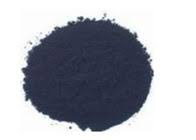Exploring the Vibrant World of Powdered Indigo for Textile Art and Dyeing Techniques
The Allure of Powder Indigo From Ancient Color to Modern Craft
Indigo, a color that is as rich in history as it is in cultural significance, has captivated artisans and enthusiasts for millennia. Derived from the leaves of the indigo plant, this deep blue dye has transitioned from being a natural resource of ancient civilizations to a beloved and sought-after commodity in the modern crafting world. One particularly intriguing form of indigo is powder indigo, a versatile medium that artists and crafters are using to explore the boundaries of creativity.
Historical Background
The history of indigo dyeing can be traced back thousands of years. Cultures across the globe, from the Egyptians to the Japanese, have utilized indigo to create stunning textiles. The earliest known use of indigo dates back to around 2500 BC in the Indus Valley Civilization. The dye was not only prized for its vibrant color but also for its durability and resistance to fading, making it ideal for clothing and other textile applications.
The production of indigo dye involves a complex process, starting with the fermentation of the indigo leaves. Once harvested, the leaves are soaked in water, fermented, and then oxidized to produce a rich blue pigment. In ancient times, this process required significant labor and knowledge, positioning indigo as a luxury item. It became a symbol of wealth and status, particularly in Europe during the Middle Ages and the Renaissance.
The Modern Crafting Scene
In contemporary times, powder indigo has gained popularity among artists and artisans who appreciate both its aesthetic qualities and its cultural significance. The powder form of indigo is derived by drying and grinding the dye, resulting in a fine pigment that can be used in various applications, including painting, dyeing fabrics, and crafting.
powder indigo

One of the most exciting aspects of powder indigo is its versatility. Artists can mix the powder with mediums like water, alcohol, or oil to create unique paints or dyes. This adaptability allows creators to experiment with different techniques, including watercolor painting, fabric dyeing, and even pottery glazing. The rich hues of indigo can evoke feelings of serenity and depth, making it a popular choice for both traditional and contemporary artworks.
Environmental Considerations
As society grows increasingly aware of environmental issues, the production and use of indigo have also evolved. Natural indigo, while historically significant, often involved harmful practices, particularly in the colonial era when large plantations were established for production. Today, there is a growing movement towards sustainable practices in dye production. Artisans are exploring organic farming methods, ethical sourcing, and eco-friendly dyeing processes.
Moreover, many crafters have begun to embrace the idea of using indigo as a means of sustainable fashion. By incorporating powder indigo into their work, they create indigo-dyed garments and textiles that reduce waste and promote conscious consumption. This aligns with a broader trend in the crafting community, where the focus is shifting towards sustainability, ecological awareness, and preserving traditional techniques.
Conclusion
Powder indigo is more than just a pigment; it represents a rich tapestry of history, culture, and artistry. Its journey from ancient civilizations to the modern crafting world mirrors the evolution of our relationship with color, creativity, and the environment. As artisans continue to experiment with this exquisite dye, powder indigo not only enriches their works but also serves as a reminder of the deep-rooted heritage that weaves through our practices.
With its versatility and depth, powder indigo continues to inspire and innovate in a myriad of artistic endeavors. Whether used in fabric or paint, it carries with it the stories of countless generations. By embracing the beauty and significance of powder indigo, crafters and artists participate in a legacy that honors tradition while encouraging sustainability and creativity in the present day. As we delve into this beautiful blue world, we find that powder indigo is not merely a color but a connection to our collective past and an invitation to create with intention and respect for the resources of our planet.
-
The Timeless Art of Denim Indigo Dye
NewsJul.01,2025
-
The Rise of Sulfur Dyed Denim
NewsJul.01,2025
-
The Rich Revival of the Best Indigo Dye
NewsJul.01,2025
-
The Enduring Strength of Sulphur Black
NewsJul.01,2025
-
The Ancient Art of Chinese Indigo Dye
NewsJul.01,2025
-
Industry Power of Indigo
NewsJul.01,2025
-
Black Sulfur is Leading the Next Wave
NewsJul.01,2025

Sulphur Black
1.Name: sulphur black; Sulfur Black; Sulphur Black 1;
2.Structure formula:
3.Molecule formula: C6H4N2O5
4.CAS No.: 1326-82-5
5.HS code: 32041911
6.Product specification:Appearance:black phosphorus flakes; black liquid

Bromo Indigo; Vat Bromo-Indigo; C.I.Vat Blue 5
1.Name: Bromo indigo; Vat bromo-indigo; C.I.Vat blue 5;
2.Structure formula:
3.Molecule formula: C16H6Br4N2O2
4.CAS No.: 2475-31-2
5.HS code: 3204151000 6.Major usage and instruction: Be mainly used to dye cotton fabrics.

Indigo Blue Vat Blue
1.Name: indigo blue,vat blue 1,
2.Structure formula:
3.Molecule formula: C16H10N2O2
4.. CAS No.: 482-89-3
5.Molecule weight: 262.62
6.HS code: 3204151000
7.Major usage and instruction: Be mainly used to dye cotton fabrics.

